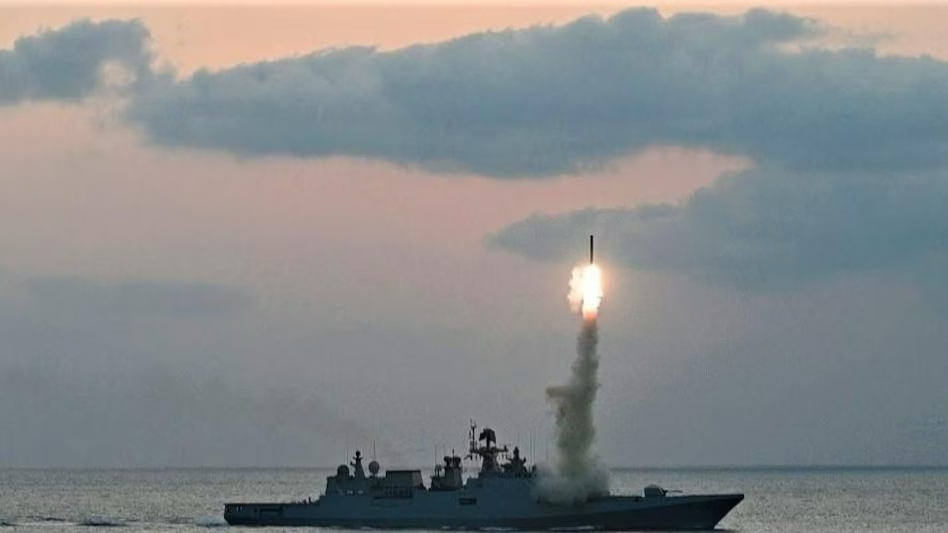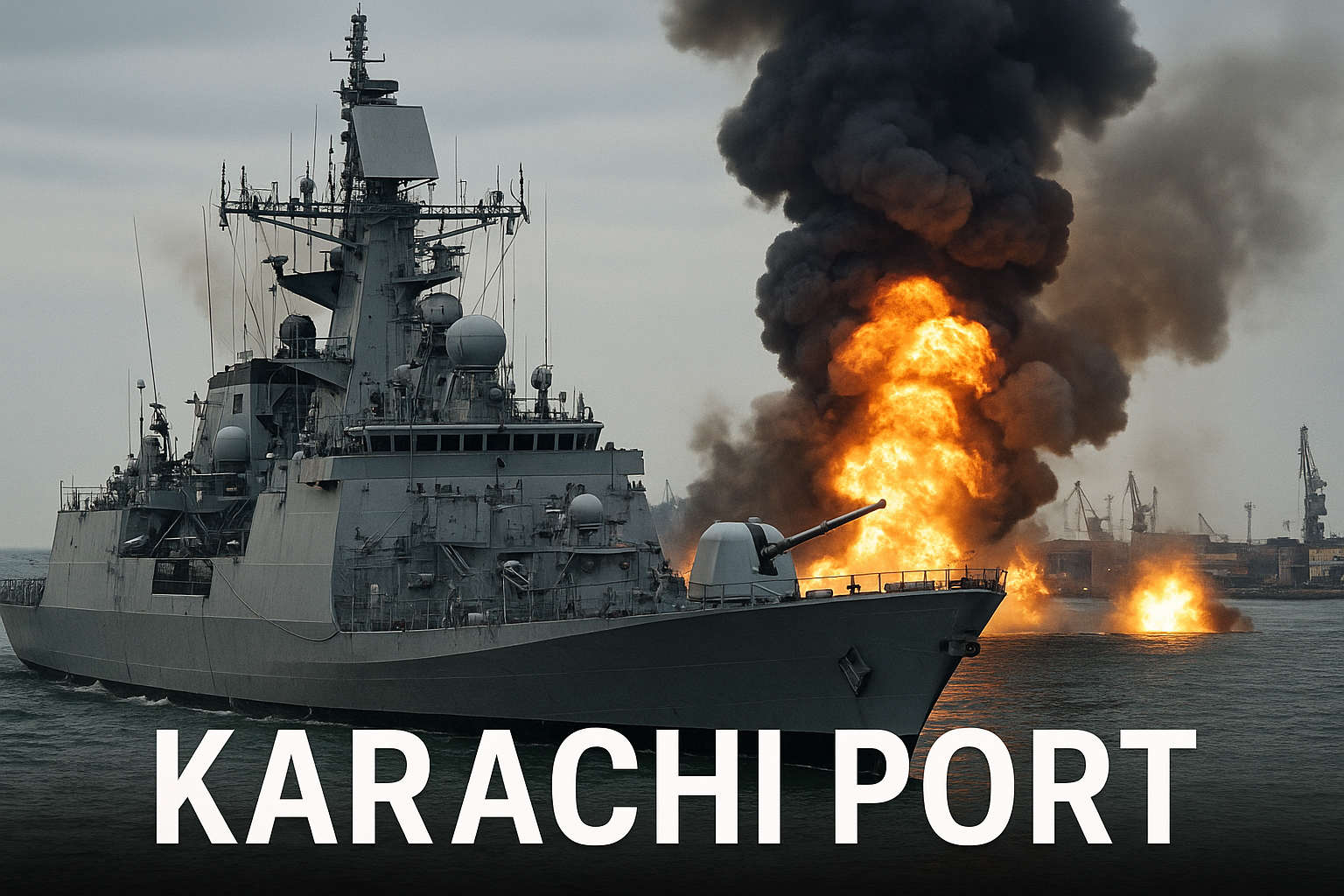
The Indian Navy has once again etched its mark in history, launching a calculated and impactful attack on Karachi Port. This remarkable maneuver, reminiscent of the daring operations of the 1971 Indo-Pak war, has sparked widespread discussions and captured international attention. In this article, we delve into the details of this significant event, the strategic importance of Karachi Port, and its implications on the geopolitical landscape.
Karachi Port: A Strategic Lifeline for Pakistan
Karachi Port, often described as Pakistan’s economic jugular vein, plays a pivotal role in the nation’s trade and commerce. Situated on the Arabian Sea, this bustling port handles the majority of Pakistan’s import and export activities, contributing substantially to the country’s GDP. Given its strategic importance, any disruption to its operations can have far-reaching economic and political consequences.
For decades, Karachi Port has been a symbol of economic vitality and a hub for maritime trade in South Asia. Its strategic location makes it a valuable asset, not only for Pakistan but also for neighboring countries reliant on smooth maritime logistics. However, its prominence also makes it a prime target during periods of conflict.
The port is equipped with modern infrastructure and is a focal point for Pakistan’s trade routes. Over the years, it has expanded its facilities to accommodate larger vessels and increasing trade volumes. It also serves as a critical node in China’s Belt and Road Initiative, further amplifying its strategic significance. Any attack or disruption at Karachi Port can reverberate across the region, affecting economic activities and trade networks.
The Indian Navy’s Precision Strike
Reports confirm that the Indian Navy executed the attack with remarkable precision and effectiveness. This operation marks the first offensive on Karachi Port since the historic 1971 Indo-Pak war, during which the port faced devastating attacks by Indian naval forces.
The strike was carried out with advanced naval technology, including guided missiles and electronic warfare systems. Sources indicate that the operation involved a combination of naval ships, submarines, and aerial surveillance to ensure mission success. The seamless coordination between different branches of the Indian armed forces further underscores the sophistication of the operation.
Why This Operation Stands Out
Unlike the 1971 attack, which was a part of an extensive war strategy, the recent strike appears to be a highly calculated and isolated operation. Military experts suggest that it demonstrates India’s advanced naval capabilities and strategic acumen. Here’s why this operation stands out:
- Technological Sophistication: The Indian Navy employed cutting-edge technology and state-of-the-art weaponry to ensure the success of the mission. This included precision-guided munitions and real-time intelligence gathering, which minimized the chances of error.
- Minimized Collateral Damage: One of the highlights of the operation was its surgical precision, aimed at avoiding civilian casualties and collateral damage. This reflects a commitment to adhering to international norms and reducing humanitarian impact.
- Strategic Timing: The timing of the attack underscores a well-coordinated and meticulously planned effort, reflecting India’s commitment to maintaining regional security. The operation’s execution during a period of heightened tensions demonstrates a clear message of deterrence and preparedness.
- Psychological Impact: Beyond the physical damage, the strike sends a strong psychological message to adversaries. It highlights India’s capability to neutralize threats effectively and decisively.
Historical Parallels: The 1971 Indo-Pak War
To understand the gravity of the recent operation, it’s essential to revisit the events of 1971, when the Indian Navy’s attacks on Karachi Port played a pivotal role in securing victory for India during the Bangladesh Liberation War. Operation Trident and Operation Python, launched in December 1971, crippled Pakistan’s naval capabilities and dealt a severe blow to its economy.
The 1971 attacks were characterized by their audacity and effectiveness. Using missile boats, the Indian Navy inflicted substantial damage on Karachi Port, destroying oil storage tanks and decimating Pakistani naval vessels. These operations not only demonstrated India’s naval prowess but also altered the course of the war, hastening Pakistan’s surrender.
The success of the 1971 operations was attributed to meticulous planning and the element of surprise. Indian forces leveraged their geographical advantage and superior intelligence to outmaneuver Pakistani defenses. The destruction of key infrastructure at Karachi Port significantly weakened Pakistan’s ability to sustain its war efforts, contributing to the eventual liberation of Bangladesh.
The recent strike draws undeniable parallels to these historic events, showcasing a blend of strategic foresight and military precision. It also underscores the importance of maintaining robust naval capabilities to safeguard national interests.
Implications of the Recent Attack

Economic Repercussions for Pakistan
The attack on Karachi Port is likely to have significant economic ramifications for Pakistan. Disruption in port operations can lead to:
- Supply Chain Disruptions: Karachi Port handles a substantial volume of Pakistan’s trade. Any disruption can create bottlenecks in the supply chain, affecting industries reliant on imported raw materials. For instance, sectors such as textiles, manufacturing, and agriculture could face shortages of essential inputs, leading to production delays and increased costs.
- Increased Insurance Costs: The perceived threat to maritime trade could lead to a spike in insurance premiums for vessels docking at Karachi Port. This, in turn, could make Pakistani exports less competitive in the global market, affecting trade volumes and revenue.
- Economic Slowdown: A prolonged disruption could adversely impact Pakistan’s economic growth, exacerbating existing challenges. The country’s reliance on foreign aid and loans may increase, further straining its fiscal resources.
- Investor Confidence: The attack could deter foreign investors and multinational corporations from engaging in Pakistan, citing security concerns. This would have a cascading effect on job creation, economic development, and overall stability.
Geopolitical Ramifications
The attack has also heightened tensions in the already volatile South Asian region. Here are some potential geopolitical consequences:
- Escalation of Hostilities: The operation could lead to retaliatory measures, escalating hostilities between India and Pakistan. This cycle of action and reaction could destabilize the region, increasing the risk of broader conflict.
- Regional Security Concerns: Neighboring countries may feel compelled to reassess their security measures in light of the incident. This could lead to an arms race or increased militarization, further complicating regional dynamics.
- International Diplomacy: The attack is likely to draw responses from global powers, influencing diplomatic dynamics in the region. Countries such as the United States, China, and Russia may issue statements or take actions that reflect their strategic interests in South Asia.
Pakistan’s Response
Pakistan’s government has strongly condemned the attack, terming it an act of aggression. In a statement, the Pakistani Navy vowed to take all necessary measures to safeguard the country’s maritime interests. While details of their response remain unclear, military analysts suggest that Pakistan may seek to bolster its naval defenses and enhance maritime security.
The incident has also sparked a wave of nationalism within Pakistan, with calls for unity and resilience in the face of adversity. Political leaders have urged citizens to remain vigilant and support the armed forces in safeguarding the nation’s sovereignty.
India’s Official Stance
The Indian government has maintained a measured and diplomatic tone in its response. Officials have emphasized India’s commitment to regional stability while asserting the nation’s right to protect its sovereignty and security interests. The operation has been described as a necessary step to address emerging threats.
Indian defense experts have highlighted the importance of maintaining a robust and modernized navy to counter challenges in the Indian Ocean region. They have also called for increased collaboration with international partners to ensure maritime security and stability.
Conclusion: A Defining Moment in South Asia’s Geopolitical Landscape
The Indian Navy’s recent strike on Karachi Port marks a defining moment in South Asia’s geopolitical narrative. It underscores India’s naval capabilities and strategic resolve while highlighting the vulnerabilities of critical infrastructure in conflict zones.
As the region grapples with the aftermath of this operation, the need for constructive dialogue and conflict resolution becomes increasingly apparent. The incident serves as a stark reminder of the fragile balance of power in South Asia and the importance of diplomacy in navigating the complexities of international relations.
The strategic importance of Karachi Port and the broader implications of the attack will likely remain topics of discussion for years to come. Both India and Pakistan face the challenge of balancing military preparedness with the pursuit of peace and stability in the region. The international community also has a role to play in fostering dialogue and preventing further escalation, ensuring that South Asia remains a zone of cooperation and development rather than conflict.

